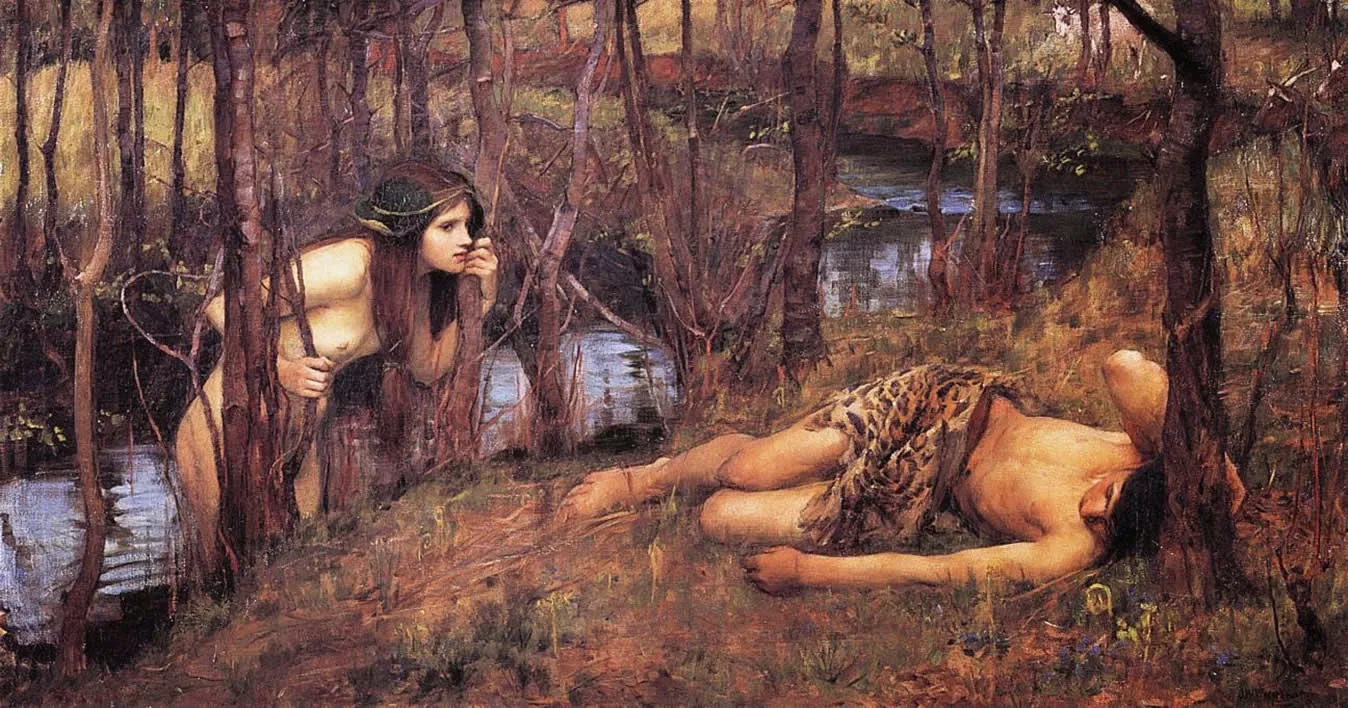Ένα
κορίτσι ηλικίας 12-13 χιλ. ετών αποκαλύπτει την καταγωγή των κατοίκων της
αμερικανικής ηπείρου. Mosa,
a Mojave Girl with Face Paint. A new study could help resolve a
longstanding debate about the origins of the first people to inhabit the
Americas, researchers report. The study relies on genetic information extracted
from the tooth of an adolescent girl who fell into a sinkhole in the Yucatan
12,000 to 13,000 years ago.
Η
καταγωγή των κατοίκων της αμερικανικής ηπείρου αποτελεί ένα διαχρονικό
μυστήριο.
New genetic
evidence supports the hypothesis that the first people in the Americas all came
from northeast Asia by crossing a land bridge known as Beringia. When sea
levels rose after the last ice age the land bridge disappeared. Credit: Julie
McMahon
Αν
και η κρατούσα θεωρία αναφέρει ότι οι πρώτοι κάτοικοι της Αμερικής πέρασαν στην
ήπειρο μέσω του Βερίγγειου Πορθμού εντούτοις δεν έχει εξακριβωθεί αν
προέρχονταν από την Ασία, την Ευρώπη ή την Αυστραλία. Η ανακάλυψη του σκελετού
ενός νεαρού κοριτσιού ηλικίας 12-13 χιλιάδων ετών φαίνεται ότι θα δώσει λύση
στο μυστήριο.
Η
«νεράιδα»
The Sac Actun cave
system on Mexico's Eastern Yucatán Peninsula. About 12,000 years ago Earth
experienced a great climactic change, when the melting of the ice caps caused a
dramatic rise in global sea levels, which flooded low lying coastal landscapes
and cave systems. Many of the subterranean spaces that once provided people and
animals with water and shelter became inundated and lost until the advent of
cave diving. 'Hoyo Negro is a more than 100-foot-deep, bell-shaped,
water-filled void about the size of a professional basketball arena deep inside
a drowned cave system,,' said James Chatters, lead author on the study. 'Only
technical cave divers can reach the bottom.
Το
2007 εξερευνητές ανακάλυψαν στο Μεξικό ένα υποθαλάσσιο σπήλαιο που ονομάστηκε Hoyo Negro (μαύρη τρύπα) επειδή καλύπτεται από πολύ
πυκνό σκοτάδι.
The caves of the
Yucatan became a sacred place for the Mayan civilisation that established
itself about 10,000 years later.
Το
σπήλαιο που έχει μέγεθος όσο περίπου ένα γήπεδο μπάσκετ αποτελεί συχνό πόλο
έλξης εξερευνητών. Σε μια από τις πρώτες έρευνες στο σπήλαιο εντοπίστηκε ένας
ολοκληρωμένος σκελετός δίπλα σε σκελετούς διαφόρων ζώων.
Naia's skull as it
was found: Hoyo Negro is a black abyss in the state of Quintana Roo that is
completely filled with water. It can only be reached by divers travelling more
than 4,000 feet through underwater passages using underwater propulsion
vehicles, or scooters, which enable them to cover long distances.
Όπως
διαπιστώθηκε, ο σκελετός αυτός ανήκει σε ένα κορίτσι εφηβικής ηλικίας που ζούσε
στην περιοχή πριν από 13 χιλιάδες έτη. Σύμφωνα με τους ειδικούς, το εύρημα
είναι εξαιρετικής σημασίας διότι, όπως πιστεύουν, αποτελεί τον χαμένο κρίκο της
καταγωγής των Αμερικανών.
Ναϊάδα
πλησιάζει τον κοιμώμενο Ύλα. Πίνακας του
Τζον Γουίλιαμ Γουότερχαουζ. A Naiad by John
William Waterhouse, 1893; a water nymph approaches the sleeping Hylas.
Οι
ερευνητές ονόμασαν το εύρημα «Ναϊάς», από τις Ναϊάδες, τις νύμφες του νερού της
Αρχαίας Ελλάδας από τις οποίες σύμφωνα με τη μυθολογία κατάγονται και οι…
νεράιδες.
Χαμένος
κρίκος
Assessing the
skeleton's age required a novel approach given the challenging environmental
conditions. The research team analyzed tooth enamel and bat-dropped seeds using
radiocarbon dating and calcite deposits found on the bones using the
uranium-thorium method, establishing an age of between 12,000 and 13,000
years. Analyses of DNA extracted from
the skeleton's wisdom tooth found it belonged to an Asian-derived lineage that
occurs only in America (haplogroup D, subhaplogroup D1). Finding a skeleton
with DNA from one of America's founding lineages in Central America greatly
expands the geographic distribution of confirmed Beringians among the earliest
Americans.
Οι
γενετικές αναλύσεις που πραγματοποιούνται στον σκελετό έχουν αρχίσει να
αποδίδουν καρπούς. Τις αναλύσεις πραγματοποιούν ερευνητές με επικεφαλής
ειδικούς της Applied Paleoscience,
μιας εταιρείας αρχαιολογικών και παλαιοντολογικών μελετών στην Ουάσινγκτον.
Παρά τις ανατομικές διαφορές που έχει η Ναϊάς με τους σύγχρονους αυτόχθονες
Αμερικανούς (αυτούς που χαρακτηρίζουμε ως «ινδιάνους») φαίνεται ότι οι πρώτοι
κάτοικοι της ηπείρου και οι ινδιάνοι έχουν κοινή γονιδιακή καταγωγή.
Divers Alberto Nava
and Susan Bird transport the Hoyo Negro skull to an underwater turntable so
that it can be photographed in order to create a 3-D model.
«Η Ναϊάς είναι ο χαμένος κρίκος ο οποίος κλείνει
το κενό που είχαμε για τις σχέσεις των πρώτων κατοίκων της ηπείρου και των
ινδιάνων» αναφέρει ο Τζέιμς Τσάτερς, ιδιοκτήτης της Applied Paleoscience και επικεφαλής των ερευνών. Οι ανατομικές
διαφορές που εμφανίζονται ανάμεσα στους πρώτους κατοίκους και τους ινδιάνους
οφείλονται σε εξελικτικές διεργασίες που προέκυψαν κατά τη διάρκεια της
αποίκησης της αμερικανικής ηπείρου.
Οι
ερευνητές συνεχίζουν τις αναλύσεις στη Ναϊάδα ευελπιστώντας ότι θα
αποκωδικοποιήσουν το γονιδίωμά της, γεγονός που θα αποκαλύψει νέα στοιχεία για
τη καταγωγή των Αμερικανών. Οργανώνονται επίσης νέες αποστολές στο σπήλαιο για
την ανακάλυψη και άλλων σκελετών. Η μελέτη της Ναΐάδας υποστηρίζεται από το National Geographic και τα ευρήματα δημοσιεύονται στην
επιθεώρηση «Science».









Δεν υπάρχουν σχόλια:
Δημοσίευση σχολίου